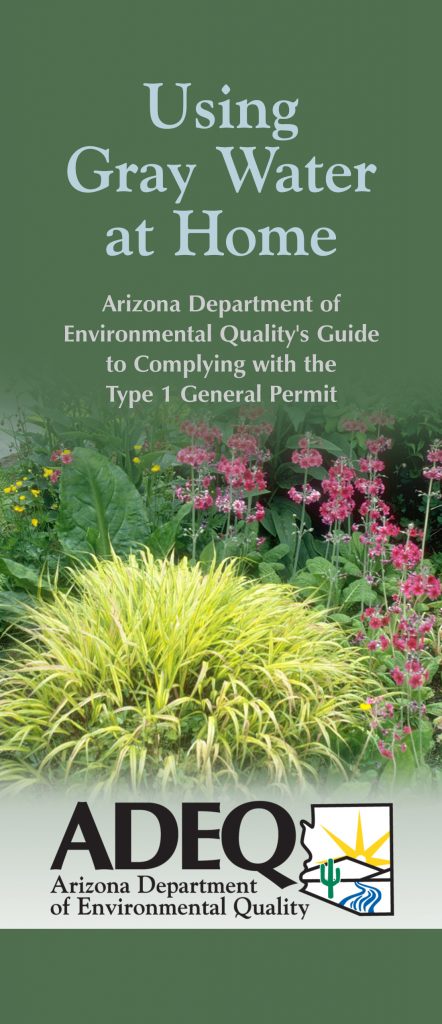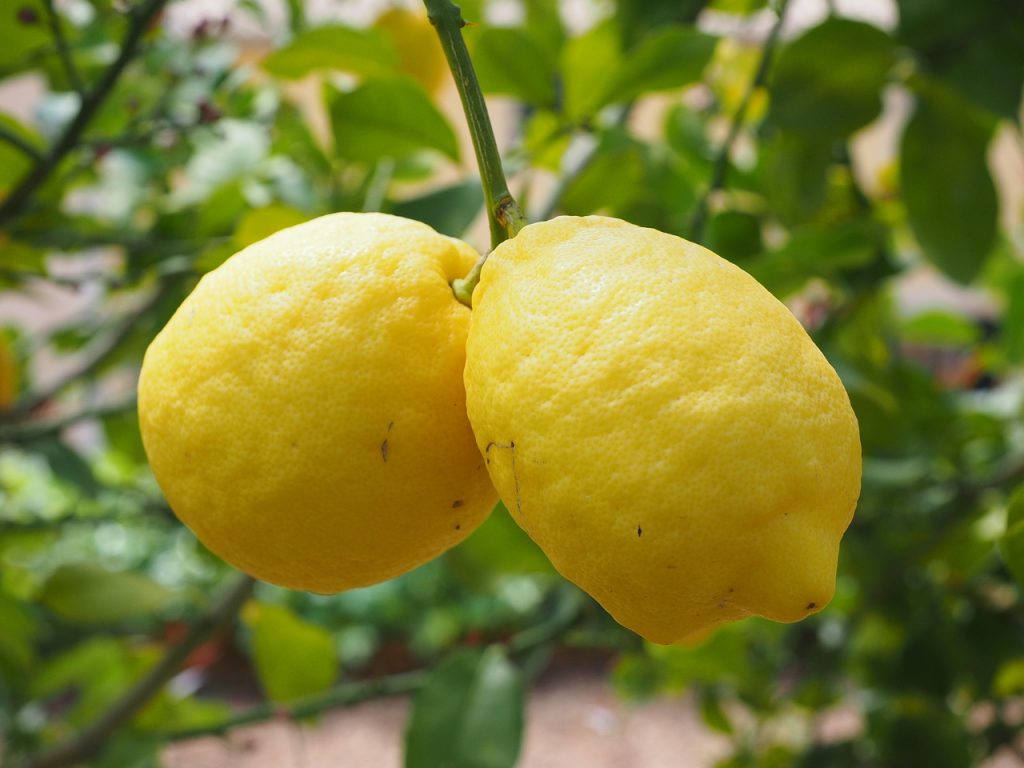Minimal rainfall in Arizona is a great reminder of why we need to use water as wisely as possible. This includes informing ourselves about the ever-increasing and innovative ways to recycle all types of water, such as the water from our washing machines, bathtubs, showers, and bathroom sinks. These are collectively referred to as “gray water”. In Arizona, gray water has been determined to be safe for irrigation of outdoor landscaping — even certain food-producing types of vegetation — as long as you follow some basic, common-sense practices. Here are some suggestions for using gray water at home.
What should I know before I decide to recycle my gray water?
An important way to educate ourselves in our quest to conserve water is to become familiar with the rules that the Arizona Department of Environmental Quality (ADEQ) has developed for the safe on-property use of this valuable water resource from single-family residences. If you would like to see the actual rules, the website is listed at the end of this article. In addition, the ADEQ developed a handy brochure (see below) which simplifies the rule language to make it easy for us to understand and implement.

What are the rules?
In order to help in the decision to recycle your gray water, the following rule highlights may be helpful:
- Each household may use up to 400 gallons per day of gray water for irrigation. This upper limit should not be a concern for the average-sized household. For reference, a family of four would be hard-pressed to produce 100 gallons of gray water daily.
- Gray water is not clean, potable (drinkable) water; it contains contaminants. The name of the game is to keep it away from people and pets. In this regard, you should never spray it into the air. Use irrigation methods that keep the gray water on the ground or even under the ground surface. When using surface irrigation, it should soak in quickly and not be allowed to pool or pond on the ground.
- Gray water which has been used to wash diapers (or similar) should never be recycled — that water must always go to the sewer system. It should also not be recycled if it contains any hazardous substances. You don’t want to put this kind of wastewater out into the environment. It could be very harmful to everything from the microbiome of the soil, to the insects and the birds who eat those insects.
- Gray water can be used to irrigate citrus and nut trees (again, using surface or sub-surface irrigation methods), but not for vegetation to be used as food in which the edible portion would come into contact with the gray water.
- Your gray water must not run off your property; it belongs to you — you made it, and believe me, no one else wants it.
If you have what’s called an “on-site” sewer system, such as a septic tank, you cannot factor in your use of gray water for irrigation in order to get by with a smaller-sized sewer system. Your on-site system needs to be able to take all of the wastewater produced by your household. This is because there may be times or conditions in which you would not be able to use your gray water, and you need somewhere safe for it to go.
Is my gray water wasted if I let it go into my municipal sewer system?
The good news is all water (including gray water) that goes down the drain in any of the municipalities in the Phoenix-metro area gets recycled. Since the 1960s, these municipalities have been pioneers in the high-level treatment of wastewater and in recycling this water for beneficial purposes. These include such things as the irrigation of agriculture, golf courses, landscaping, and local power generation. Some of it is put into basins, where it infiltrates into the aquifer, undergoing an even higher level of treatment by way of natural cleansing processes. Some of it is used to replenish streams and create lush riparian ecosystems, such as the Tres Rios constructed wetlands at the confluence of the Salt, Gila, and Agua Fria rivers.
What resources are available?

There are many outstanding resources available for gray water recycling. You’ll be pleasantly surprised at what you can find on the internet for gray water system design and advice. Here is a sample:
- Arizona Gray Water Rules (go to R18-9-711):
- ADEQ Gray Water Brochure
- The City of Tempe offers a rebate for installing a gray water system
- Oasis Design Graywater Central
- Graywater Harvesting by Brad Lancaster
- City of Tucson Residential Gray Water Information Guide
- Greywater Cleaning Products
- Graywater Resources from Watershed Management Group
Hopefully, this is enough information to give you an idea of what needs to be considered before you undertake the recycling of your household gray water. This is not a complete tour of the rules. Each potential recycler needs to become familiar with all of them (there are 13) in order to decide if recycling gray water is for them. It’s not for everyone, but there are many thousands of Arizonans who have made the commitment to the responsible recycling of their gray water in order to save precious water resources. I hope this short summary provides some helpful information and introduces you to a few of the many resources available to assist you in your water conservation endeavors.
From time to time, Water – Use It Wisely features guest bloggers who write about topics related to water and water conservation. The author of this blog, Marcy Mullins, is an Environmental Resources and Compliance Specialist with Global Water, one of 18 water partners. Previously, Marcy worked for the Arizona Department of Environmental Quality (ADEQ) as the coordinator for the Reclaimed Water Program.



